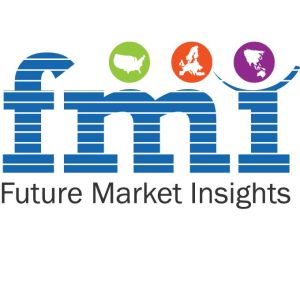Automotive Engine Encapsulation Market Trends, Regulations and Competitive LandsPosted by vakhas on September 11th, 2019 Automotive Engine Encapsulation Market: Dynamics Stringent government regulations for emission control is the primary factor to drive the automotive engine encapsulation market during the forecast period. Its numerous advantages such as reducing carbon emission from the vehicles and unwanted airborne noise, increasing fuel efficiency and enhance engine performance are also expected to drive the automotive engine encapsulation market during the forecast period. Growing production and sales of the automotive in the emerging countries also rising the demand of the automotive engine encapsulation in the global market during the forecast period. However, increasing preference of electric vehicles in the global automotive market are anticipated to hampering the growth of the automotive engine encapsulation market during the forecast period. Automotive Engine Encapsulation Market: Introduction Automotive engine encapsulation is the process that is used to provide thermal and acoustic insulation in form of a covering on the engine of the vehicle. It is used to create thermoplastic shield that helps to reducing engine noise as well as simultaneously improving thermal efficiency of the automotive. Automotive engine encapsulation also improves the fuel consumption and CO2 emissions of the vehicle. Automotive engine encapsulation retains the heat of the engine within the automotive engine compartment and enhances the efficiency and performance of the vehicle engine by allowing oils and lubricants to perform at their best levels. Automotive engine encapsulation is used on electronic and combustion engines and transmission. The need of noise generation and CO2 emission in the automotive industry encouraging the automobile manufacturers to include automotive engine encapsulation in the vehicle, since it can reduce the fuel consumption and absorb unwanted noise production by the engine during operations. Engine under the automotive engine encapsulation thermoplastic sandwiched shield also insulate and prevent the batteries from cooling to quickly while not in operation Request Sample Report@ https://www.factmr.com/connectus/sample?flag=S&rep_id=3117 Moreover, the material used to manufacture automotive engine encapsulation shield is carbon fiber, polyamide, Polypropylene, among others. Most of the Manufacturers are prefer the carbon fiber over the other materials for the automotive engine encapsulation owing to its light in weight and has high thermal resistance. Automotive Engine Encapsulation Market: Segmentation The global Automotive Engine Encapsulation market can be segmented on the basis of Fuel Type, Material Type, Vehicle Type, Shield Mounting, Sales Channel and region. Based on Fuel Type, the Automotive Engine Encapsulation market has been segmented as:
Based on Material Type, the Automotive Engine Encapsulation market has been segmented as:
Based on Vehicle Type, the Automotive Engine Encapsulation market has been segmented as:
Based on Shield Mounting, the Automotive Engine Encapsulation market has been segmented as:
Based on sales channel, the Automotive Engine Encapsulation market has been segmented as
Automotive Engine Encapsulation Market: Regional Outlook Geographically, the automotive engine encapsulation market is segmented into five regions including the Middle East and Africa, North America, Latin America, Europe and the Asia Pacific. Asia Pacific is estimated to account for dominant market share in the automotive engine encapsulation market owing to growing production and sales of the automotive in India, China, and japan. Continuously, growing investment for automation and innovations in the automotive industry also drive the demand of the automotive engine encapsulation market during the forecast period. Major automotive companies are outsourcing their parts from the Asia Pacific on the basis of low prices along with serving regional market. North America is estimated to witness for sustainable growth in the automotive engine encapsulation market owing to demand of light- weight, high efficiency and eco-friendly vehicles to meet stringent government regulations and standards. Europe is expected to witness of considerable growth of automotive engine encapsulation market owing to rising in manufacturing and sales of electric vehicles over the forecast period. Latin America automotive engine encapsulation market is significantly driven by the manufacturing and sales of the light weight automotive. Automotive Engine Encapsulation Market: Market participants Some of the market participants identified across the value chain of the Automotive Engine Encapsulation market are:
The research report presents a comprehensive assessment of the Automotive Engine Encapsulation market and contains thoughtful insights, facts, historical data, and statistically supported and industry-validated Automotive Engine Encapsulation market data. It also contains projections using a suitable set of assumptions and methodologies. The research report provides analysis and information according to Automotive Engine Encapsulation market segments such as geographies, application, and industry. The report covers exhaustive analysis on:
Regional analysis includes:
The report is a compilation of first-hand information, qualitative and quantitative assessment by industry analysts, inputs from industry experts and industry participants across the value chain. The report provides in-depth analysis of parent market trends, macro-economic indicators and governing factors along with market attractiveness as per segments. The report also maps the qualitative impact of various factors on Automotive Engine Encapsulation market segments and geographies. Report Highlights:
NOTE - All statements of fact, opinion, or analysis expressed in reports are those of the respective analysts. They do not necessarily reflect formal positions or views of Company Like it? Share it!More by this author |


